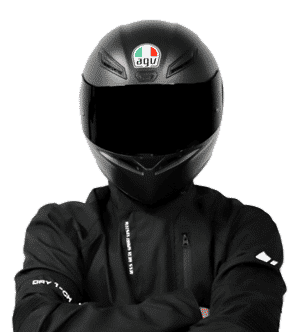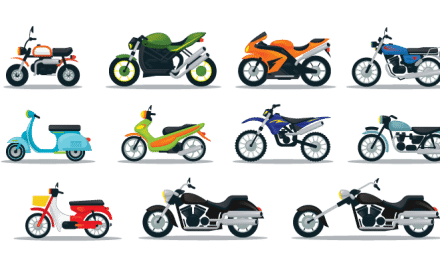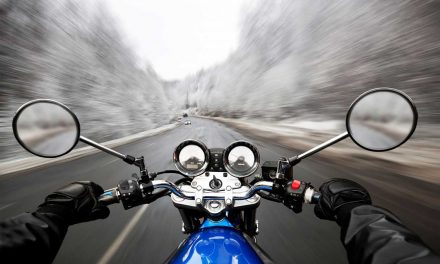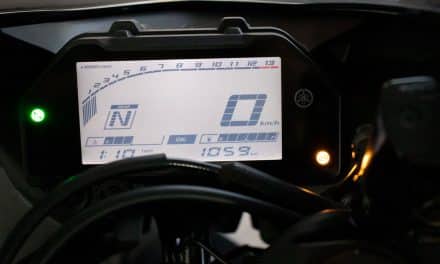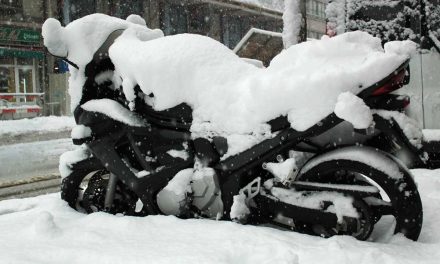Do you remember the last time you checked your motorcycle before you went on a ride? Have you gone over every component, cleaned it thoroughly, and taken the time to replace any worn or damaged parts?
Your motorcycle is a complex piece of machinery with so many components tightly packed into a chassis that has the ability to take your life. Is it worth it to check your motorcycle? Yes! People often forget that motorcycles, although more reliable now than in the past, are still not as reliable as the average car or truck. They need more maintenance and you need to be much more careful.
We’ve created this checklist to explain how you should check your motorcycle before you ride it. Every time you ride, you and your motorcycle are exposed to the elements. Tires, frame, wiring, mirrors, brakes, chain, and other components will all deteriorate over time. Let’s take a detailed step by step approach on how you should check your motorcycle before you ride.
What are the different components of Motorcycles?
Motorcycles have many complicated parts that all work together cohesively to form a powerful machine. These parts and accessories include:
- Frame
- Controls
- Wiring
- Mirrors
- Lights
- Wheels
- Tires
- Brakes
- Suspension
- Throttle
- Battery
- Chain / Belt
- Stands
- Coolant
- Fluids
- Fuel
- Gear
Many of these pieces have even smaller components, and in almost every case if the parts are not all working together properly you could end up seriously injured or even killed. It is important to keep your bike healthy and well-maintained for your safety and the safety of others.
Should I check my gear?
Checking your gear is an important part of your pre-ride checklist. Helmets should be intact and fit properly. They should also be replaced every five years, or after any crashes. You are ten times more likely to be seriously injured or die without a helmet, and some states/provinces require them by law. For these reasons, it is important to keep yours in good working condition.
Jackets and pants, usually made of leather or high-quality textiles, are also an important part of motorcycle safety. These pieces can protect your skin from road rash if you did have an accident. They can also help protect you from any kickback of rocks and debris from cars. Make sure your jacket and pants have no holes or heavy wear areas and that they still fit you well.
Boots and gloves are just as important as the rest of your gear. Boots should fit well and be in good condition. They should include toe protection, and go up well above your ankles to prevent breaking or twisting your ankles and feet. The gloves should be comfortable and free of any holes or heavy wear.
All of the gear listed is available with light to heavy armor. They are all important pieces of the overall picture when it comes to motorcycle safety. If you have an accident for any reason at all, you will want to ensure that you keep your body as safe as you can from skinning yourself on the asphalt and breaking bones. Keeping the safety gear in good condition will go a long way in doing that.
Pre-Ride Checklist
Checking your bike thoroughly before heading out on any ride can go a long way to preventing both an accident and costly repairs to your motorcycle later. Following these steps will allow you to enjoy your ride without the anxiety and worry of something happening while riding at high speeds down the open road. Allowing your motorcycle to be in disrepair can lead to injury or death to you and/or the other people on the road.
Overall frame
Check the front and rear of the frame first. Move the handlebars back and forth while engaging the bike front end suspension. Everything should move freely. If you feel resistance, grinding, or you feel it is too tight, have it checked over by a professional. It should feel comfortable and easy to move and it should be smooth.
The rear frame should be raised up so that you can check the swing arm and overall movement. There should be free movement up and down, but no movement side to side. If the swing arm can move side to side you risk it becoming unstable during your ride and causing an accident.
Tires and wheels
While examining the frame, have a look at your tires. Ensure that the wear bars are not even with the tread. Make sure there are no holes or cuts. Keep an eye out for nails or other embedded debris. The tire pressure can be checked with a pressure gauge. The last thing you want is to blow a tire in the middle of traffic or while driving at high speeds!
While checking the tires look over the wheels. Make sure there are no missing spokes. The wheel weights should be balanced, and if you move your wheels around they should not feel loose or make any weird noises.
Brakes
The brakes are your first line of defense. If things go wrong, you need to be able to trust that your brakes will do their job and stop your motorcycle in time. Ensure your brake pads are in good condition and not too worn down. Squeeze them a bit to make sure they are still hitting the wheel at the correct angles.
Controls, Wiring, and Cables
The controls, wiring, and cables all work together. Squeeze the brake lever to make sure the brake lines are in good working order and don’t bleed anywhere. Turn on your bike and test the throttle. Make sure it opens and closes precisely and freely. If there is any noise or revving when the handlebars are manipulated, or if you feel a tightness or grinding, have it serviced right away.
Make sure the cables are all lubed up at the ends and shafts. Go over every inch to check for fraying or damage. Check for kinks and turn the handlebars to ensure the cables don’t become entangled or bound up. Also, check that all connections are tight and readjust them. The same goes for any wiring.
Lights and Mirrors
The lights and mirrors are both parts to your bike that help you see what is both in front of and behind you. They also allow people to see you. Lights on your motorcycle include brake lights, passing lights, signal lights, emergency lights, high beams, and the headlamp. You need to ensure each and every one of these is in good working order to prevent accidents.
The mirrors should be crack and scratch-free. Ensure that they are tightly mounted but that the mirror itself moves easily enough for you to adjust as needed, but not so easily that they will move on their own.
Battery
Check your battery often. Make sure it is secure and tight in its housing. There should be no corrosion, and the connections should all be secure. A loose battery can lead to damage and corrosion and bad connections can cause other issues with the bike.
Belts and chains
All belts and chains should be connected securely. There should be no fraying, cracks, breaks, or major wear. Make sure everything is properly lubed up and freely moving. Check for debris and loose rocks or dirt. It should all be clean and kept in good order.
Stands
Stands should be secure and free of cracks and bends. Set the bike on its stands and make sure that they hold your bike up properly. Check where the stands meet the bike and make sure they are mounted securely. Check the Retention spring and that they retract firmly.
Fluids
Your motorcycle includes many fluids. Brake fluid, transmission, coolant, fuel, oils, and more are all things that need to be checked regularly. Each model and brand carries their own fluid levels and types, so always check your owner’s manual to make sure you have the correct fluids and they are all kept at the correct levels.
Post-Ride Checklist
The post-ride checklist reads the same as the pre-ride checklist. In reality, it is actually a much better idea to check your bike over after a ride so that if you find any issues you can correct them before the next time you want to go out. For example, if you ran over a nail or screw you will see it right after your ride and repair the tire right away. If you wait until your next ride, you may end up having to forego it completely due to repairs.
This is also a good time to check your fluid levels. That way, if you are low on anything you can pick it up and refill before your next ride. It would suck to decide to just wait until your next ride only to realize you are low on everything and don’t have any oil or fluids on hand.
Conclusion
Today’s motorcycles are safer than ever before. They are built to last a long time. Some people may take that for granted and not perform the routine maintenance that the bike requires. Just because they are built safer than they were in the past does not mean they can not fail or cause an accident if not properly cared for.
Follow the directions from your motorcycle’s user manual. Manufacturers provide the manuals so that the new owners can keep their bikes running safely and efficiently for a lifetime. Finding out that your bike has a bad tire or loose cables in the middle of heavy traffic on a highway could be life-threatening. Don’t put yourself or others in that situation.
If there is something that you are not comfortable repairing or maintaining on your own you can always contact a licensed motorcycle mechanic. They are specially trained, and often offer good pricing for regular maintenance and repairs. Once you confirm everything is in good working order you are ready to have fun!

